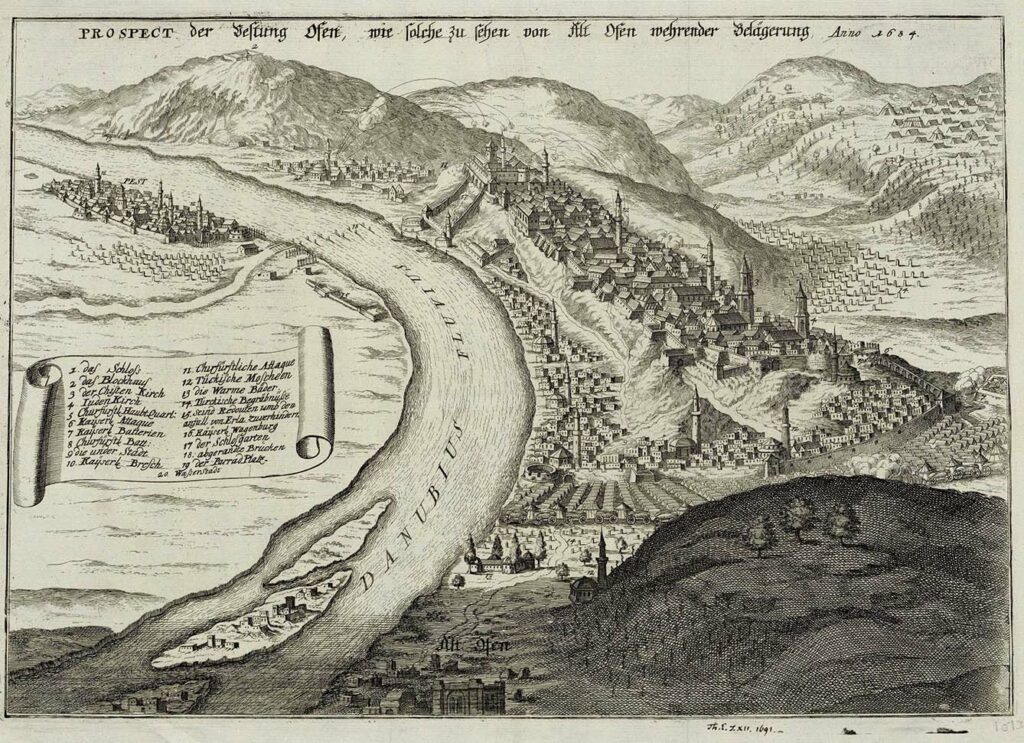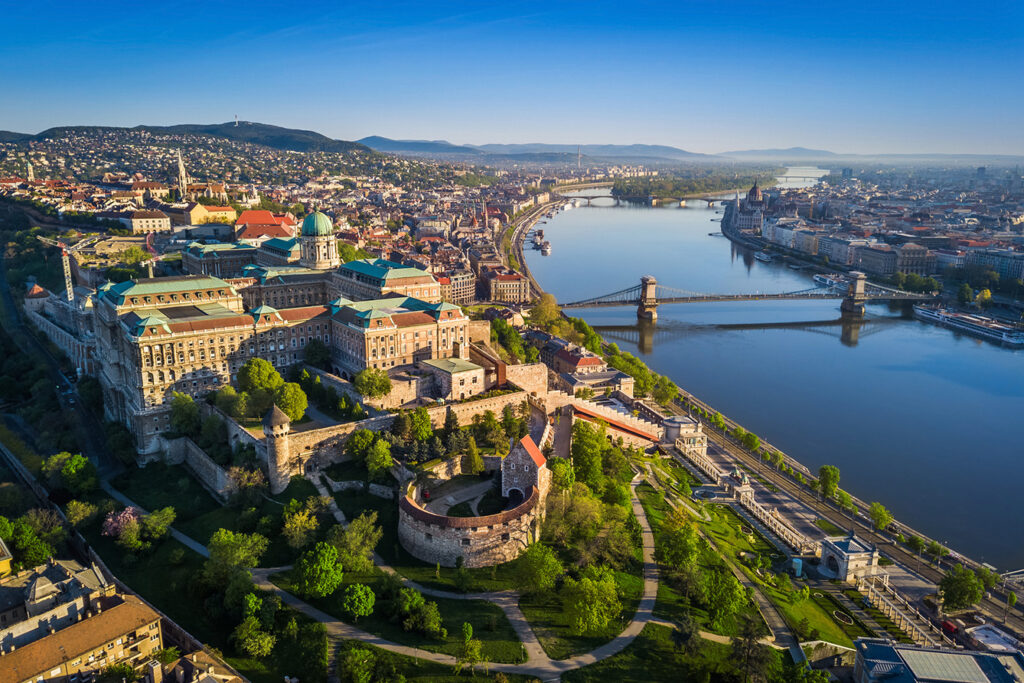Although the capital of Hungary is one of the oldest cities in Central Europe, you won’t find the name Budapest on any map older than 150 years. That’s when the twin cities of Buda and Pest united and, together with a third called Ó-Buda, formed Budapest. But why is Budapest called Budapest? If you’re not sure, you are not alone. The name was very nearly the other way around.
Budapest name: why not the other way around
Settled comfortably on the two banks of the Danube, Buda and Pest are in many ways very different cities. Buda is home to a castle and a king’s residence, and busy Pest across the river bustles with city life. Such has been the case throughout history. Even now, the magnificent 19th-century Parliament building sits on the Pest side, a symbol of citizens regaining the balance of power and standing strong in the face of the castle on the other side of the river.

The origin of both names is largely unknown. Buda may refer to Újbuda, as Roman Aquincum came to be known after the Mongol invasion, but it could also come from the name of Attila the Hun’s brother. It could even have something to do with the Slavic word ‘voda,’ meaning water. The same goes for Pest, which Ptolemy describes in the 2nd century AD as Pession, but could instead refer to pests – in Slavic caves – on the slopes of famous Gellért Hill. On the Buda side, the Hill itself lent its name to the ford and the ford to the settlement on the opposite side of the river.
Throughout the 19th century, along with the construction of the famous Chain Bridge, there was a discussion about uniting the two cities. It eventually came to fruition in 1873, although István Széchenyi, the statesman who conceived the idea, died years earlier.
Széchenyi was fine with the name Buda, referring to the capital of Hungaria, as he rather detested Pest. There’s nothing wrong with that feeling, as Hungary was a part of the German-speaking Austrian Empire at the time, and in German, “Pest” is the word for plague. He even came up with all-new names, such as Etelvár, Ikervár, Delivár, Hunvár, Bájkert, Dunagyöngye, and Honderű.

The latter was his favorite, but the writer József Eötvös turned Széchenyi’a attention to the French pronunciation of the name: Honte des rues would mean something like “the shame of the streets.” That meant a quick 180 back to good ol’ Buda and Pest.
Buda-Pest: drop the hyphen
Going back to the original idea – and, perhaps, the desired balance of power – the name was almost settled on… Pest-Buda. But then cartographers noticed an obstacle. If you put the name Pest-Buda on the well-oriented map, you actually headline Buda as Pest and Pest as Buda, as Buda is on the western bank of the Danube, and Pest is on the east. Not to confuse travelers, Pest-Buda became Budapest.
Dropping the hyphen happened sometime later, and in 1873, Óbuda and Margaret Island merged with Budapest. But, as Shakespeare put it, “What’s in a name?” We bet the Hungarian capital wouldn’t be any less magnificent even if its name ended up as “The shame of the streets.”







